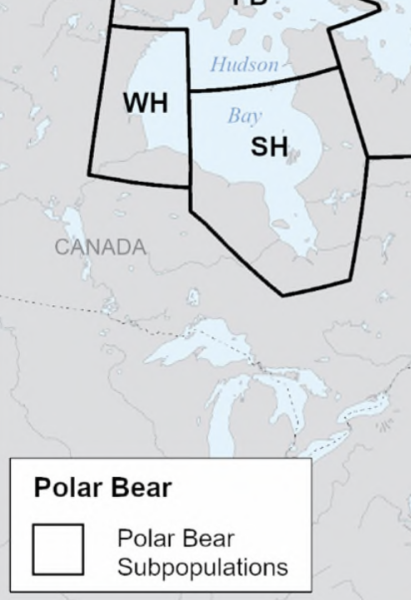As part of 90-day national consultations on the proposed Management Plan for Polar Bear in Canada, Ontario Nature’s new analysis reveals the risks Bill 5 poses to the species’ survival. These risks include the repealing of the provincial Endangered Species Act, weaker habitat definitions and ending provincial recovery strategies.
Despite committing to reducing greenhouse gas emissions by 37 percent by 2030 as a “critical” action to sustain polar bear populations, the Ontario government is falling far behind this target. Climate change models estimate that polar bears will become extinct in Ontario within the next 45 years. The loss of sea ice and maternal denning habitat will have the greatest impact on the survival of cubs and older bears.
Ontario Nature is now calling on Environment and Climate Change Canada to seek an evidence-based plan from the Government of Ontario demonstrating how it will sustain polar bear populations and their habitat without a provincial Endangered Species Act, as well as a clear plan to reduce emissions in line with previous provincial commitments.
According to Ontario Nature’s Campaigns and Advocacy Manager, Shane Moffatt: “The Government of Ontario has a responsibility to Canadians to show how it will do its share of the work to conserve the iconic polar bear. Before finalizing its urgent national plan, Environment and Climate Change Canada needs much greater transparency and conservation action from Ontario.”
Bill 5 – Protect Ontario by Unleashing our Economy Act was passed on June 5, 2025. More than 20,000 people signed an Ontario Nature petition opposing Bill 5 before it passed. The International Union for the Conservation of Nature (IUCN) Polar Bear Specialist Group identified 19 subpopulations of Polar Bears, 13 of which occur within Canada and 2 in Ontario ( the Southern Hudson Bay subpopulation and a small portion of the Western Hudson Bay subpopulation).
- Bus Cancellations - December 5, 2025
- Ladies Curling Standings – December 4th - December 4, 2025
- Nuclear industry seeks to omit nuclear waste transportation from Impact Assessment of Deep Geological Repository Project - December 3, 2025
 Wawa-news.com You can't hear the 'big picture'!
Wawa-news.com You can't hear the 'big picture'!

